On Thursday 12 August, 31 members of the Company and their guests met on a sunny day in the courtyard of the Burlington House for a visit to the Royal Academy of Arts annual Summer Exhibition.
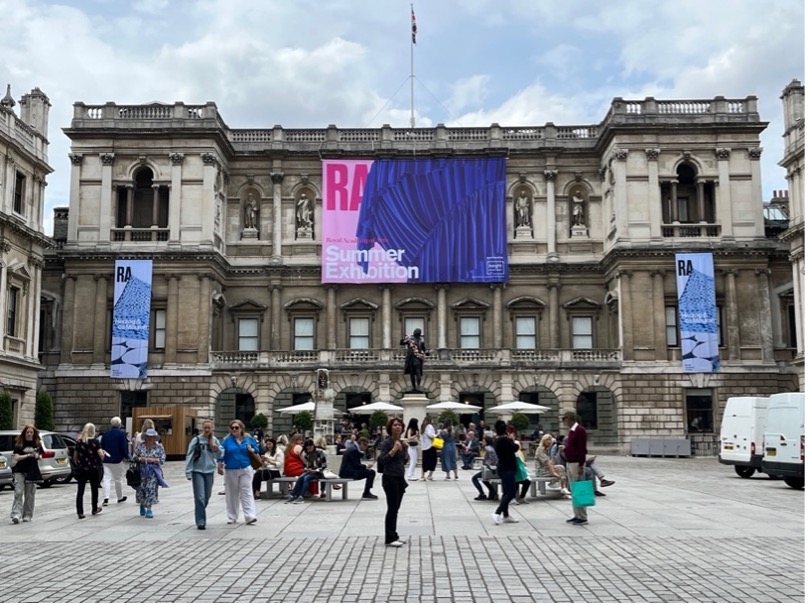
The Summer Exhibition is the world’s oldest “open submission” exhibition, which means that anyone can enter their work to be considered for inclusion. It has been run every year since 1769, and each year a different Royal Academician coordinates the exhibition, this time 81 yr old David Remfry RA.
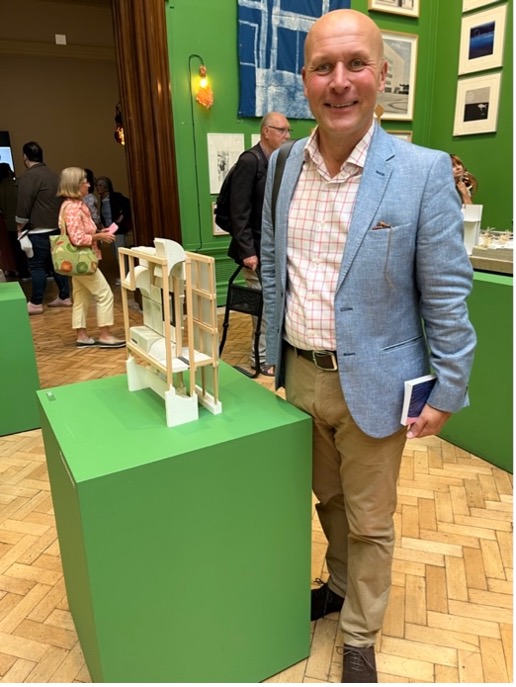
Liveryman Martin Reading organised tickets for non-members of the Academy and checked everyone in on arrival. Once in the galleries, we toured the exhibition at own own pace, focusing on whatever caught our notice. As always, there were a huge number of works on display and an eclectic mix of sculpture, painting, textiles and architectural drawings and models, in a wide range of styles from naturalistic to abstract. It is an exhibition with something for everyone, with most of the works offered for sale, but many already purchased.
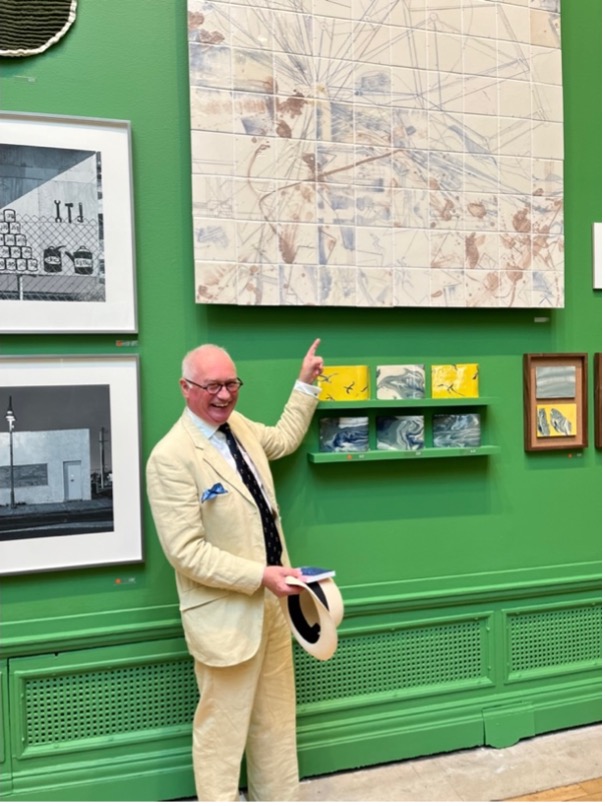
The artists ranged from well-known Royal Academicians to unknown but talented amateurs. While some were “pleasing to the eye”, others portrayed challenging subjects and were thought-provoking. Others just seemed a bit odd! A plastic packing case on the gallery floor, which appeared to be left over from transporting an exhibit, turned out to be a work of art itself.
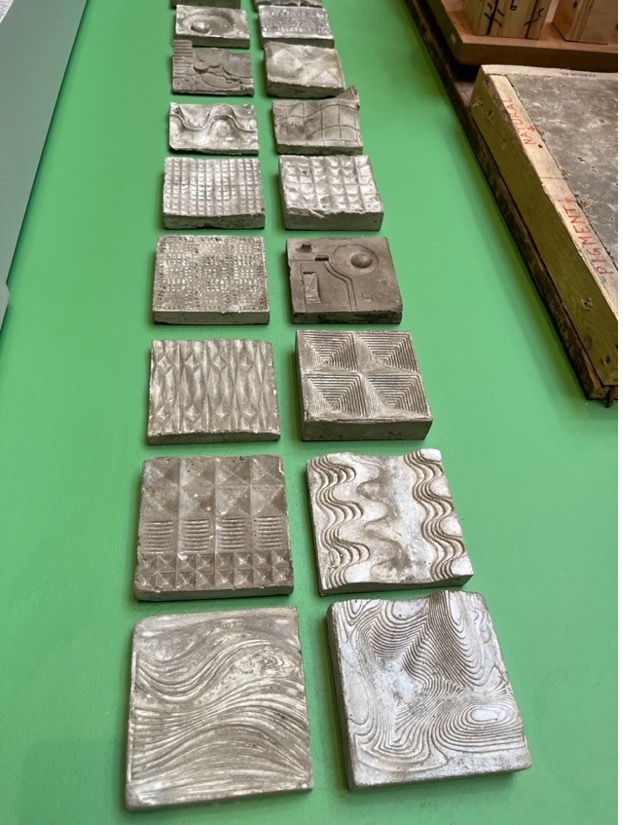
None of Carl Andre’s piles of bricks were in evidence, but there were some tiled exhibits and unusually shaped brick forms in the architecture section. After an hour and a half, visually sated but getting peckish, we gathered again in the courtyard of Burlington House to be conducted to the Reform Club by the Master.
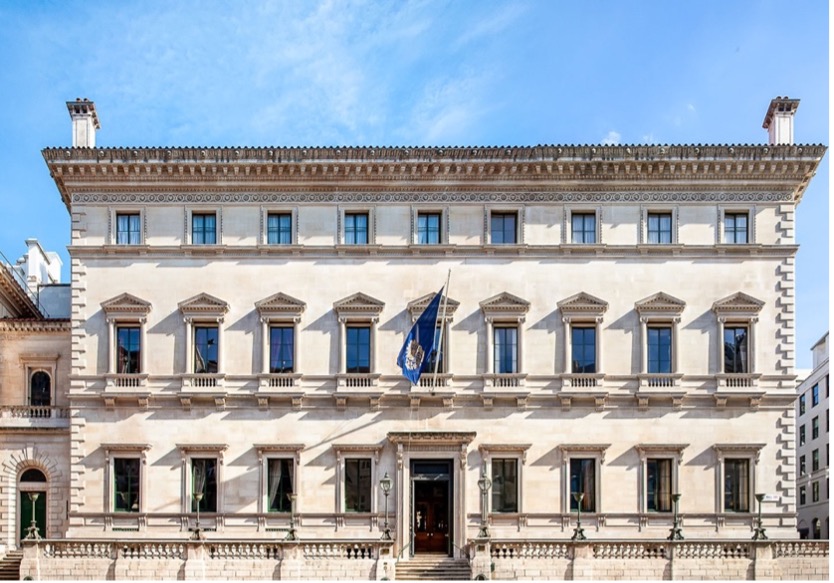
A ten minute gentle walk later we reached the Reform Club, founded in 1836 and immortalised in Jules Verne’s “Around the world in 80 days”. The clubhouse, based on the Palazzo Farnese in Rome, was designed by architect Sir Charles Barry. It was intended to be the largest and most spectacular in London, and was completed in 1841.
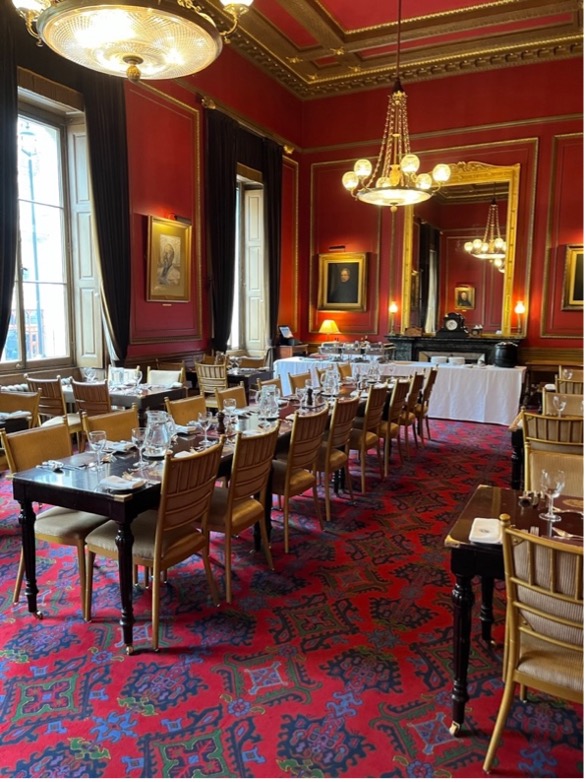
Once up the steps into the Saloon we entered the “Strangers’ Room”, for many years the only place in the Club where members could entertain non-members. With its red and gold walls, it is a warm room overlooking Pall Mall, now used by members for a light lunch. It is closed to members during August, so we had this spacious private dining room to ourselves.
We enjoyed an excellent seated buffet lunch with Club wines, and as always when Tylers and Bricklayers get together, conversation flowed. We were watched over by the portraits of authors William Makepiece Thackeray, Henry James and Charles Dickens as well as the Club’s first chef, Alexis Soyer, who was a huge celebrity in the 1840s. Soyer later went to the Crimea, feeding the troops from field stoves that he designed, saving the lives of many soldiers.
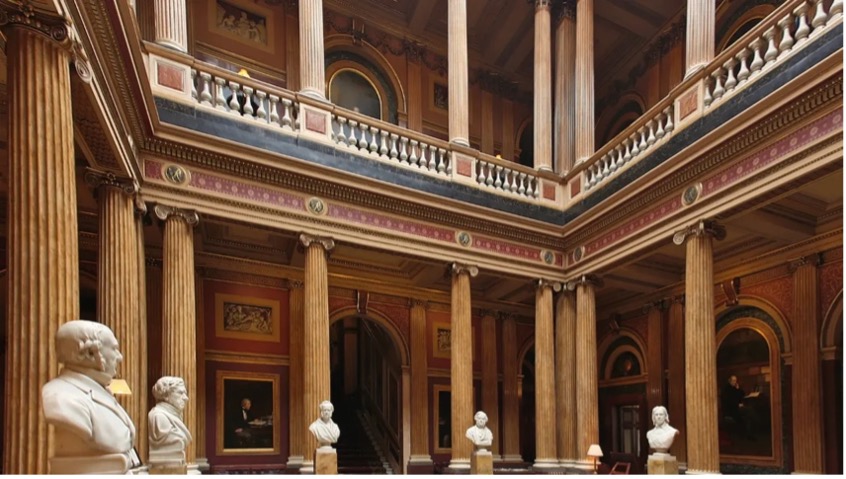
After lunch, the party was divided into two groups for a tour of the Club, led by the Master and Mistress, both of whom are members of the Club. The tour included some history of the formation of the Club as a break-away group of more radical Liberals and Whigs from the traditional members of the party who favoured Brooks’s Club. The architect was probably chosen because he was working on the new Palace of Westminster, and like many building projects, the Reform cost more than twice its original estimate. The double height Saloon has featured in a number of films and makes a spectacular central atrium, flooded with light from its large glass roof.
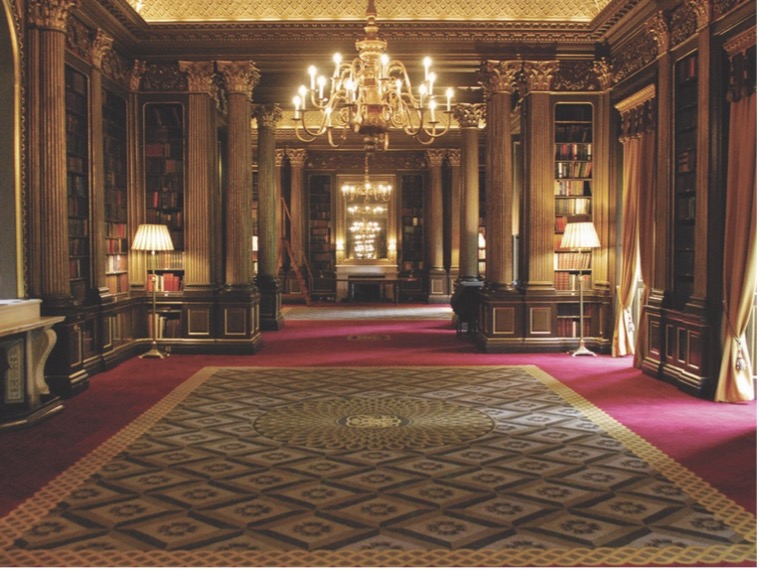
The tour included the main rooms of the clubhouse and the garden, highlighting the library comprising over 80,000 books including all the Parliamentary debates in Hansard. The library is one of the grandest rooms in London, with lovely views over the club’s gardens and a Steinway D concert grand piano bought from the Wigmore Hall.
A tour of the clubhouse would not be complete without mention of some of the more interesting members. Almost every Liberal member of Parliament in the 19th and early 20th century were members, with several Prime Ministers including William Gladstone and Winston Churchill. Other literary members include Sir Arthur Conan Doyle, HG Wells, JM Barrie, EM Foster, Hilaire Belloc and Siegfried Sassoon. Of course, there have been some notorious members. Anthony Blunt and Guy Burgess, two of the Cambridge Five spy ring, were members of the Club. Burgess was often to be found with Donald MacLean observing the comings and goings of members from their strategically placed armchairs on the balcony, and it’s still a popular place to sit for this reason.
The day concluded with tea and coffee in the saloon, and a welcome rest after going “Around the Club in 80 minutes”. Another very successful visit, according to the Master!
Prof John Schofield - 1 September 2023
